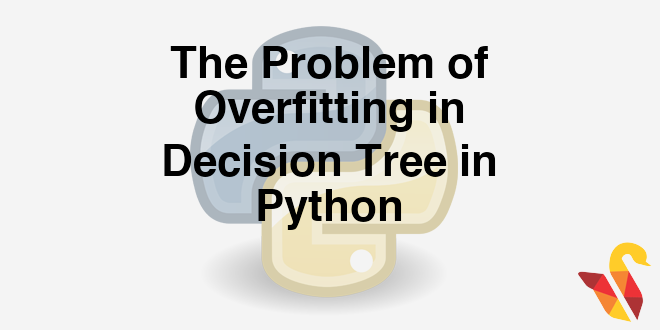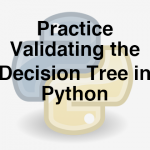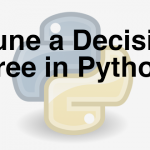
Link to the previous post : https://statinfer.com/204-3-8-practice-validating-the-tree/
So far we have built a tree, predicted with our model and validated the tree. In this post we will handle the issue of over fitting a tree.
First, we will built another tree and see the problem of overfitting and then will find how to solve the problem.
Practice : The Problem of Overfitting
- Import Dataset: “Buyers Profiles/Train_data.csv”
- Import both test and training data
- Build a decision tree model on training data
- Find the accuracy on training data
- Find the predictions for test data
- What is the model prediction accuracy on test data?
Solution
- Import Dataset: “Buyers Profiles/Train_data.csv”
- Import both test and training data
import pandas as pd
train = pd.read_csv("datasets\Buyers Profiles\Train_data.csv", header=0)
test = pd.read_csv("datasets\Buyers Profiles\Test_data.csv", header=0)
train.shape
test.shape
train.info()
# the data have string values we need to convert them into numerica values
train['Gender'] = train['Gender'].map( {'Male': 1, 'Female': 0} ).astype(int)
train['Bought'] = train['Bought'].map({'Yes':1, 'No':0}).astype(int)
test['Gender'] = test['Gender'].map( {'Male': 1, 'Female': 0} ).astype(int)
test['Bought'] = test['Bought'].map({'Yes':1, 'No':0}).astype(int)
train.info()
from sklearn import tree
#Defining Features and lables
features = list(train.columns[:2])
X_train = train[features]
y_train = train['Bought']
#X_train
X_test = test[features]
y_test = test['Bought']
#training Tree Model
clf = tree.DecisionTreeClassifier()
clf.fit(X_train,y_train)
#Plotting the trees
dot_data = StringIO()
tree.export_graphviz(clf,
out_file = dot_data,
feature_names = features,
filled=True, rounded=True,
impurity=False)
graph = pydotplus.graph_from_dot_data(dot_data.getvalue())
Image(graph.create_png())
predict1 = clf.predict(X_train)
print(predict1)
predict2 = clf.predict(X_test)
print(predict2)
####Calculation of Accuracy and Confusion Matrix on the training data
from sklearn.metrics import confusion_matrix ###for using confusion matrix###
cm1 = confusion_matrix(y_train,predict1)
cm1
total1 = sum(sum(cm1))
#####from confusion matrix calculate accuracy
accuracy1 = (cm1[0,0]+cm1[1,1])/total1
accuracy1
#Accuracy On Test Data
cm2 = confusion_matrix(y_test,predict2)
cm2
total2 = sum(sum(cm2))
#####from confusion matrix calculate accuracy
accuracy2 = (cm2[0,0]+cm2[1,1])/total2
accuracy2
The Problem of Overfitting
- If we further grow the tree we might even see each row of the input data table as the final rules.
- The model will be really good on the training data but it will fail to validate on the test data.
- Growing the tree beyond a certain level of complexity leads to overfitting.
- A really big tree is very likely to suffer from overfitting.
The next post is about pruning a decision tree in python.
Link to the next post : https://statinfer.com/204-3-10-pruning-a-decision-tree-in-python/




